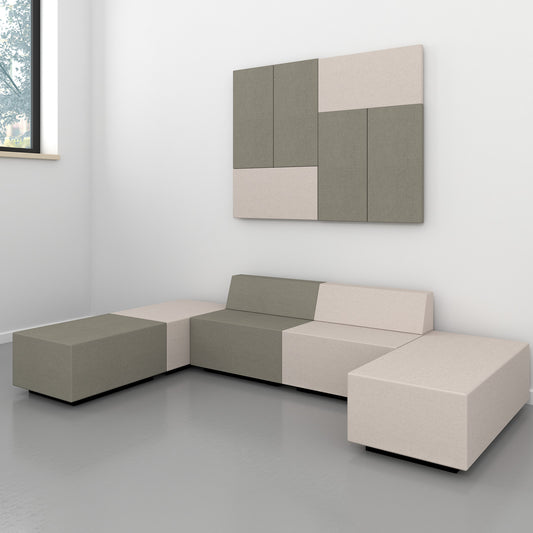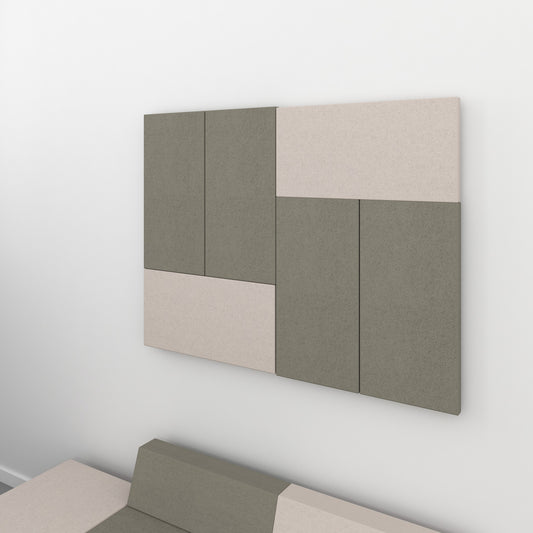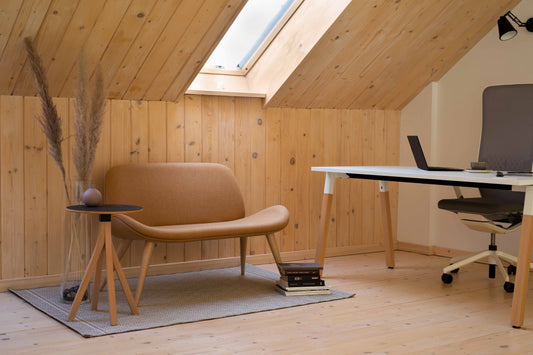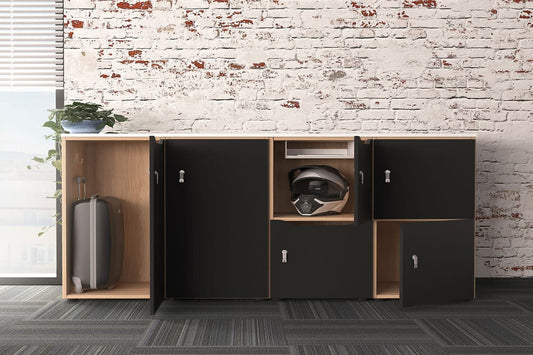Space design and job optimization | Reading time approx. 1 min 🕒
Optimal acoustics in the office: more than just a luxury
The office life can be exhausting, and often it is not just term pressure and workload that load on the shoulders of the employees. A factor for work efficiency and well -being should not be underestimated is office acoustics. A high volume of noise through phone calls, conversations among colleagues or technical devices such as printers and copiers can significantly impair concentration and productivity. In this article we respond to the importance of optimal acoustics in the office and give tips on how to create a pleasant working atmosphere.
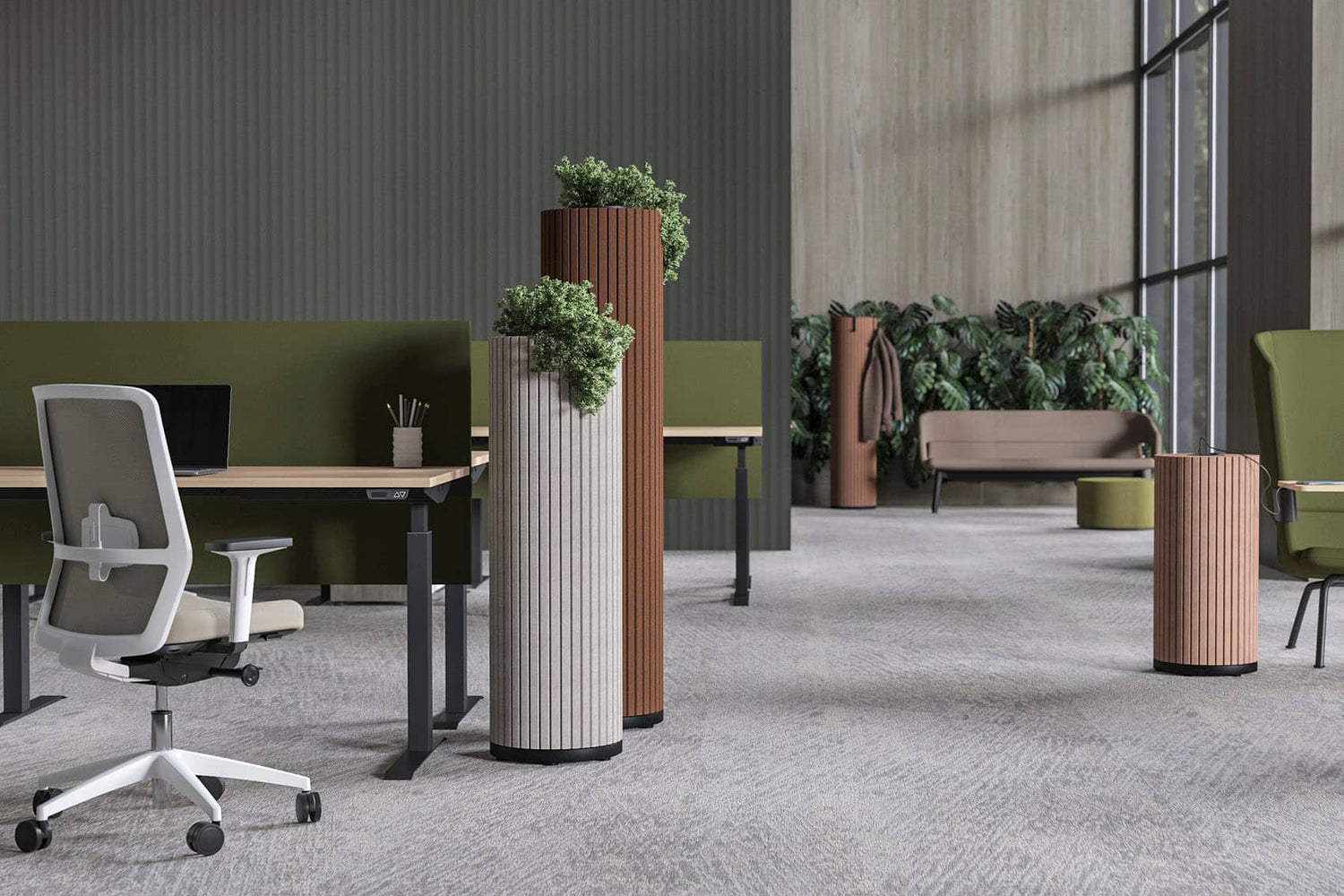
The problem: noise sources in the office
The noise sources in an office are diverse. From the printer order that runs in the background to telephone conferences in neighboring work areas. Each of these noise sources may be inconspicuous in itself, but together they result in a noise level that makes concentrated work considerably more difficult.
Optimal values for office acoustics:
Experts recommend an average noise level of 45 decibels for office environments, comparable to the noise level of a quiet library. In rooms where conferences or meetings take place, the level should be around 35 to 40 decibels to optimize language intelligibility.
Strategies for better acoustics
Planning and room concept
The first step towards better acoustics is the exact planning of the office leaf. You should consider which areas are particularly noisy. You can then separate these from the work areas in which high concentration is required.
Sound absorbing materials
An effective remedy for noise is sound -absorbing materials. This can range from special floor coverings to sound -swallowing ceiling slabs. These materials can dampen the sound and thus ensure a quieter working environment.
Acoustic room divider and partition walls
Another way to improve acoustics in the office are special room divisors or partitions that absorb the sound. These can be used flexibly to separate noisy areas from calm areas.
The role of furniture
Furniture can also make a contribution to better acoustics. High -quality office furniture is often designed in such a way that they can absorb sound and thus contribute to reducing noise. Some high -quality office furniture is equipped with materials such as acoustic felt or foam to absorb sound and improve acoustics in the room. Particularly innovative approaches even provide for special "acoustic furniture" on how sound -absorbing room divider or armchairs with high backs can prevent noise. These furniture are designed so that they "capture" sound waves and thereby reduce the general noise pollution in a room.
Professional advice
If you are unsure which measures are most effective for your office, professional advice from experts in office facility can be very helpful. These specialists can make a detailed analysis of the acoustic conditions in your office and give targeted recommendations for improvements.
Conclusion about the optimal acoustics in the office
The optimal acoustics in the office is a complex topic, which should not be neglected. By observing recommended noise levels and the use of sound -absorbing materials and furniture, you can achieve a significant improvement in the working atmosphere. Ultimately, a pleasant acoustic environment leads to more satisfied, healthier and more productive employees - a profit for everyone.
Acoustics & privacy protection
MILA acoustic table partition
1600 - 2000 mm, 650 mm high, VELITO light gray mottled


Top acoustic table partition side panel
595 mm high, reference substances Lucia / Velito / Synergy
DESK acoustic table partition
760 mm high, LUCIA polyester cover
MODUS acoustic ceiling sail
800 x 400 mm, VELITO wool cover
MODUS Acoustic wall panel
Wall cladding, complete system, wool cover Velito - Beige / Braun
SILENT ROOM M - acoustic system
Room-in-room, soundproofing, for 2 people, upholstery fabrics BERTA / VELITO / SYNERGY
MODUS acoustic wall panel
800 x 800 mm wool cover VELITO
MODUS acoustic ceiling sail
1200 x 800 mm, VELITO wool cover
Trending magazine articles
-
Raumgestaltung und Arbeitsplatzoptimierung
Skandinavisches Design im Büro
-
Product Consultation
Lockers in the office
-
Ergonomie und Gesundheit
Proper seating in the office








